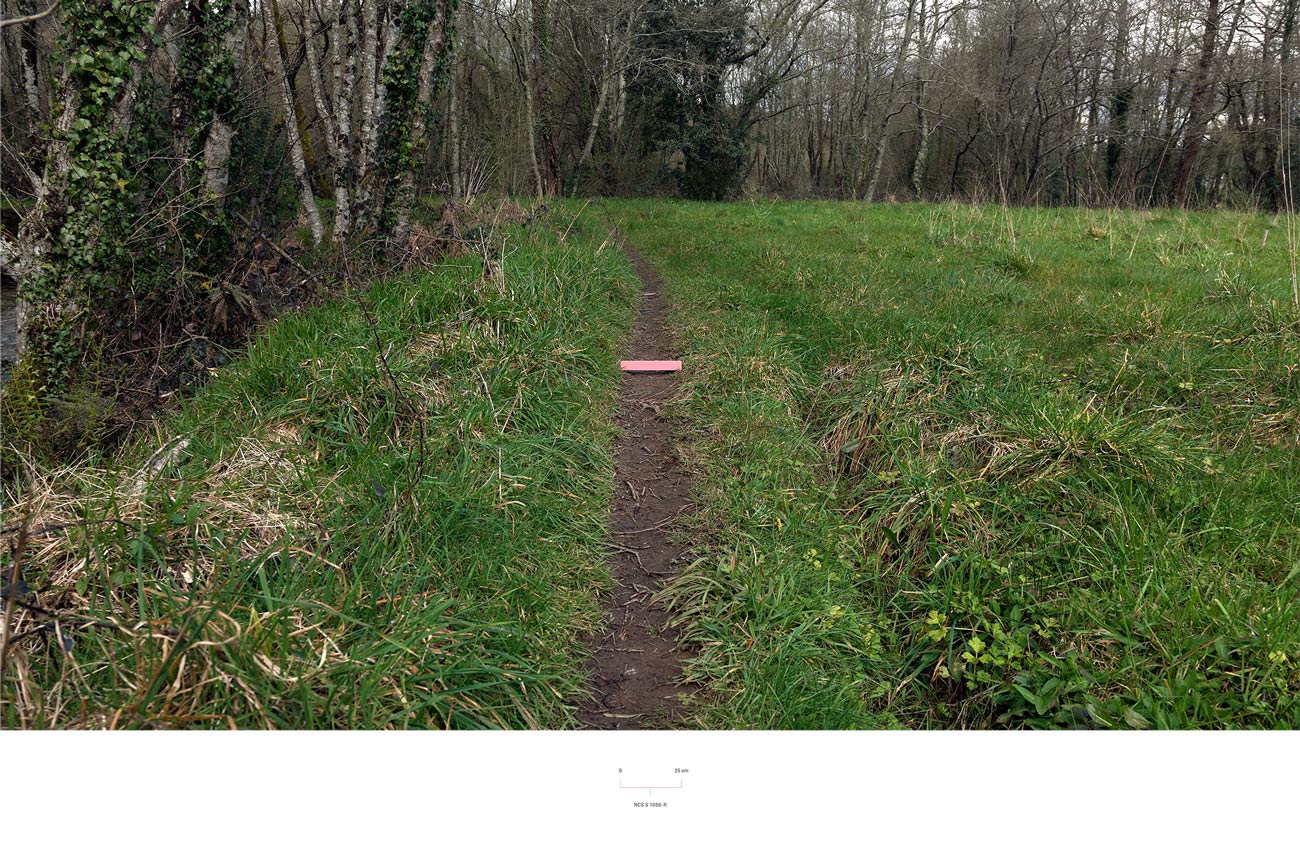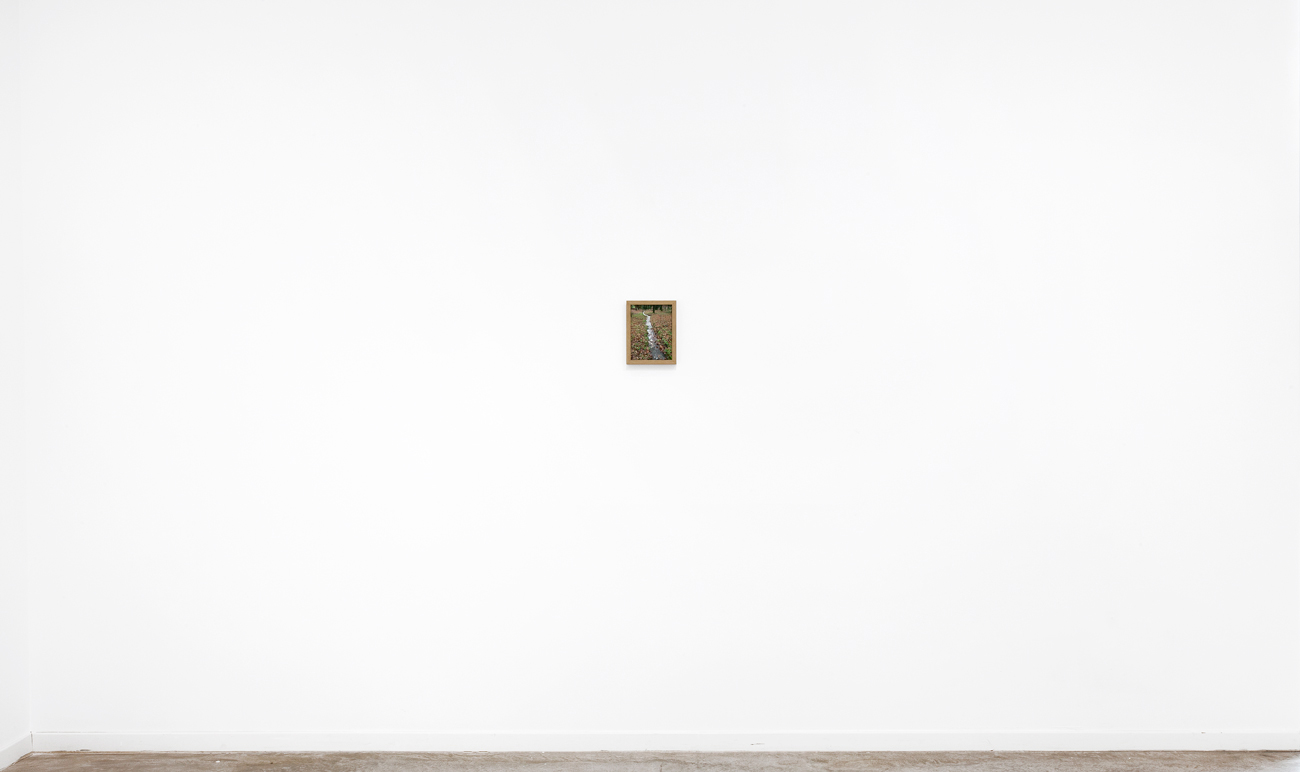
-metría, 2016.
Just like the water that expands or narrows according to the shape of its riverbed, ice (that of the glacier) adapts to the dimensions of the ravine that contains it. It knows how to adapt to the rock with precision, both to the large basin whose walls push on either side and to the gorge where it almost completely blocks the pathway. Similarly to how the geographer Élisée Reclus described the transformations of the stream running over the surface of the earth, the differences in width of the pathway also reveal the scale of the traffic within it. In a sense, this is connected to the idea of a water level that is measured in a straight line down the width of the riverbed, in relation to the curve that is drawn under the tension of the water's surface. The pathways are also involved in an erosion process, drawing up lines by sinking into the surface. Long already made this clear in '67.
In -metry, irene grau carries out a series of walks, dérives with no defined destination where she constantly measures the transformations in the path's width using a series of rods. These are taken from a measuring system that is indispensable to the Iberian Peninsula – the unit of length – and which itself comes from an anthropometric measuring system. The rods are then classified and reorganised according to their length, using a scale from another measuring system, a colour one this time; the tintometric system. Walking is indeed the first fundamental tool for measuring, for measuring oneself in the world, and this urgency for measuring units, a stubborn necessity.
15 pieces 289,50/25x3,8x3cm: enamel on wood.
3 drawings: pencil on caballo 109 2050gr paper, 42x29,8cm.
15 photographs: Ultrachrome print on baryta paper, 53x80cm. Ed. 3 + 2 a/p.
1 photograph: Ultrachrome print on baryta paper, 15x20cm.
Como el agua que se extiende o se estrecha según la forma de su cauce, así el hielo [en el glaciar] se adapta a las dimensiones del barranco que lo contiene; sabe ajustarse exactamente a la roca, tanto en la gran hoya cuyas paredes se apartan por ambos lados, como en el desfiladero donde el paso se cierra casi por completo. De un modo similar a cómo el geógrafo Élisée Reclus describía las transformaciones del arroyo corriendo por la superficie de la tierra, las diferencias de anchura en el camino revelan también el flujo del paso. Esto responde en cierto sentido a esa idea de caudal que comienza por medir el ancho del cauce en línea recta, en relación a la curva que se dibuja bajo la tensión de la superficie del agua. Los pasos están también envueltos en un proceso de erosión que dibuja líneas, hundiendo la superficie. Long lo dejó claro ya en el 67.
En -metría irene grau realiza una serie de paseos, derivas sin rumbo definido, en los que mide constantemente las transformaciones en el ancho del camino, sirviéndose de una serie de varas, algo que parte de aquella referencia indispensable en la península ibérica como unidad de longitud, y que provenía de un sistema de medida antropométrico. Posteriormente, esas varas se clasifican y reordenan en función de su longitud, sirviéndose de la gradación propia de otro sistema de medida, ahora cromático; el tintométrico. Y es que caminar es la primera herramienta fundamental con la que medir y medirse en el mundo, y esa urgencia por la medida, una obstinada necesidad.
15 piezas 289,50/25x3,8x3cm: esmalte sobre madera.
3 dibujos: pencil on caballo 109 2050gr paper, 42x29,8cm.
15 fotografías: Copia Ultrachrome sobre papel baritado Ilford Gold Fibre Silk, 53x80 cm. Ed. 3 + 2 a/p.
1 fotografía: Copia Ultrachrome sobre papel baritado Ilford Gold Fibre Silk, 15x20cm.
-

-

-

-

-

-
 Installation views at Centro de Arte Alcobendas, Madrid, 2016.
Installation views at Centro de Arte Alcobendas, Madrid, 2016.
-

-

-

-

-

-

-
 "To Long". Installation view at Centro de Arte Alcobendas, Madrid, 2016.
"To Long". Installation view at Centro de Arte Alcobendas, Madrid, 2016.
-

-

-

-

-

-
 Installation views at Centro de Arte Alcobendas, Madrid, 2016.
Installation views at Centro de Arte Alcobendas, Madrid, 2016.
-

-

-
 Process.
Process.